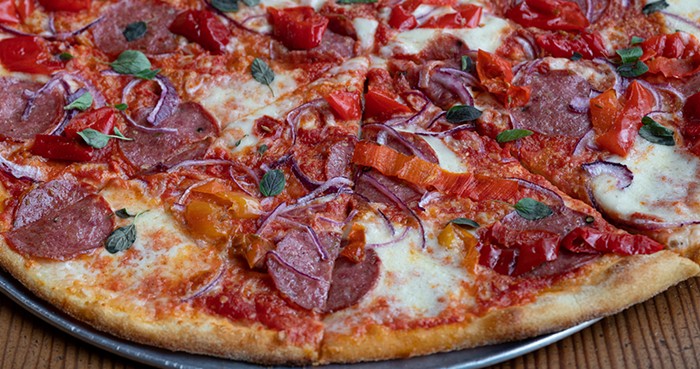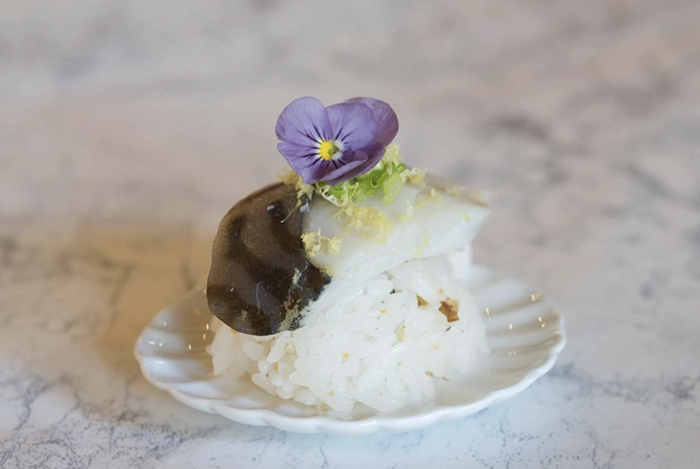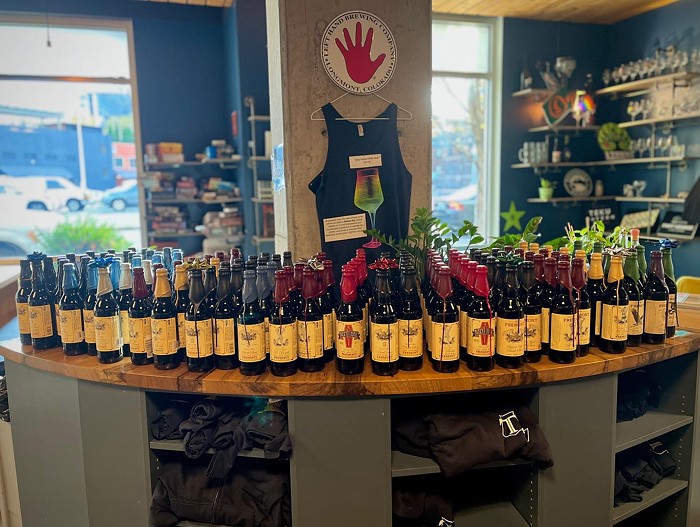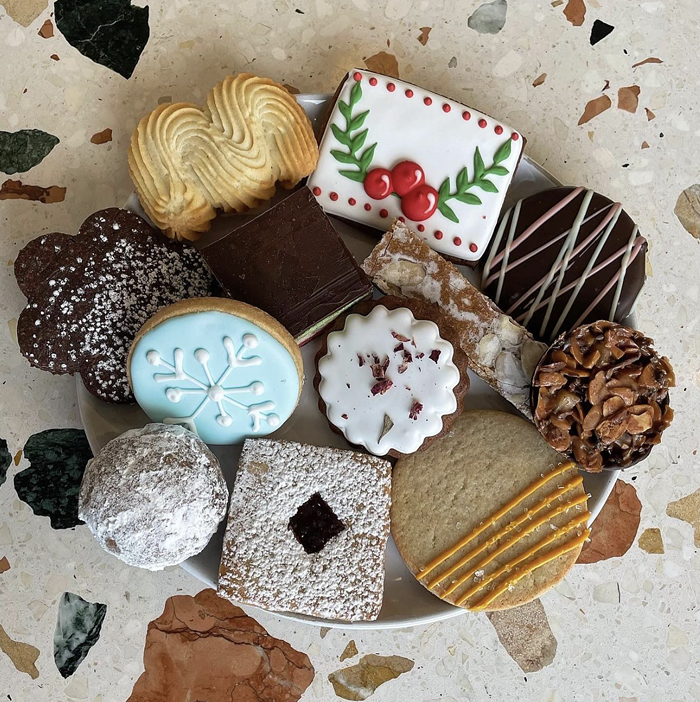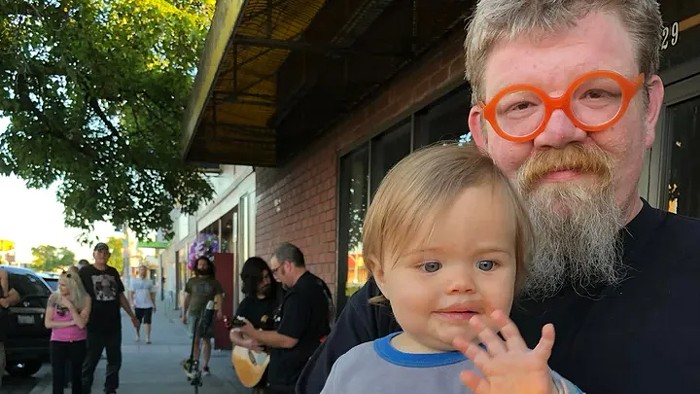Let's imagine something bad has happened to Seattle. Let's also imagine that this bad situation requires the citizens of Seattle to set up checkpoints around the city, so as to prevent non-Seattleites from entering. Let's not imagine the cause of this terrible state of emergency or what happens to those who are detected by the guards at the roadblock. We know the gruesome story in the Book of Judges; we know what happened to those who could not pronounce "shibboleth." But the Old Testament story does bring up an important problem for our imagined men and women at the checkpoints: How can you tell if someone is from our city or not? Nothing physical (eyes, hair, chin, lips, back, legs, feet, neck) says Seattle. Also, there is no such thing as a Seattle accent, in the way that there is a New York accent. So how can you tell the difference? One way is to ask the person in the car, after looking at their papers, does he/she know what Pagliacci is? If they do not know the answer, then... Well, let's not get into that.
What anyone from Seattle knows is this: Pagliacci means pizza. Indeed, a Seattle resident may know what Portland-based McMenamins is, because McMenamins opened several restaurants in Seattle. But there is a good chance that a Portlander might not know what a Pagliacci is, because the family-owned business—it was established in 1979—has never opened a restaurant outside of the Seattle area. Pagliacci has 24 locations all over town; if you have lived here for even half a year, you will have an opinion of the pizza served by this fine local institution. In short, there's almost no better way to determine if someone is or is not from Seattle than by using the word "Pagliacci." If they first think of opera, they are not of this place; if they first think of pizza, yes.
Let's now leave this awful fantasy of a Seattle surrounded by checkpoints, soldiers, dogs, inspections, and the like, and return to reality. Two months ago, Pagliacci opened its 24th location in the heart of Madison Valley. What makes this opening newsworthy is that the new building, which is on the corner of Lake Washington Boulevard and East Madison Street, is aiming to achieve LEED certification (LEED stands for Leadership in Energy and Environmental Design, which is an organization that rates the greenness of buildings). According to Matt Galvin, one of the owners of Pagliacci, the company expects the building to reach the Gold level, which is second only to Platinum. When that happens, Pagliacci's Madison Valley location will be the only LEED-certified "stand-alone pizzeria" in Seattle.
Because the sun was suddenly and unexpectedly in the sky, I decided, on a recent afternoon, to walk to the new location, which is not that far from where I work. After passing the amazingly shiny and silver Bullitt Center (which, when completed, will be "the greenest commercial building in the world," according to their website), I entered an architectural desert. There was nothing to look at or admire on 16th and Madison, 23rd and Madison, and all the way down the valley. Even the brilliance of the winter sun did not make much of a difference; it was boring building after boring building after boring building. And then something wonderful happened. It just can't be missed. It is a crack in the numbing continuum of this neighborhood. It is architecture.
In front of the building are the street and the new developments at Washington Park Arboretum; behind it are some dull houses and a magnificent ravine—trees, bushes, birds. This compact composition of glass, dark brick, and a bright wood panel and roof fixtures was designed by Richard Floisand and Allison Hogue (Floisand Studio) and constructed from scratch by Wilcox Construction in the space of just four months. (Nothing of the former building, inhabited by Spotless Cleaners, could be salvaged—if you want to see why, I recommend visiting Google Street View for 3015 East Madison Street.) Inside: a shiny concrete floor, a noble Carrara marble counter, simple wooden tables, and Eames-like chairs found by Matt Galvin in Chicago. The futuristic-looking lights that hang above the tables dim when there's lots of daylight and brighten when there isn't. And here and there are metal fittings designed by Michael Northrop's Metalworks & Design—a detail that's important because it represents Pagliacci's effort not only to be green, to meet standards set by green organizations like the Forest Stewardship Council, but to keep the materials and labor as local as possible. Even the bank that backed the project is local, Puget Sound Bank. "You know, it's not me. It's just that I listen to my employees. They recommended that we use a local bank instead of a big bank, and we did that. They recommended some of our green ideas and policies," Galvin explained. "I just listen to what they have to say. Is my sweater ugly or not? They will tell me and I will listen."
As Galvin talked, I ate a slice of pizza—the reason for this green building. Every bite I took repeated the art of Pagliacci's pizza, which is found always in the crust: It's nicely brittle and lightly oiled. I'm told by Galvin that tossing the dough has something to do with this excellent crust. And all of this time I had thought people tossed dough only for the fun of it, for the sheer delight of watching something white and floppy rise and fall, rise and fall. Outside, the gray clouds carried the sun away. The rain began to fall. I left the new building, crossed the street, turned around, and saw the future—not the apocalyptic one with its checkpoints, hellhounds, and interrogation rooms. But the one that uses less energy and forms a friendship with the trees. ![]()
This article has been updated since its original publication.


